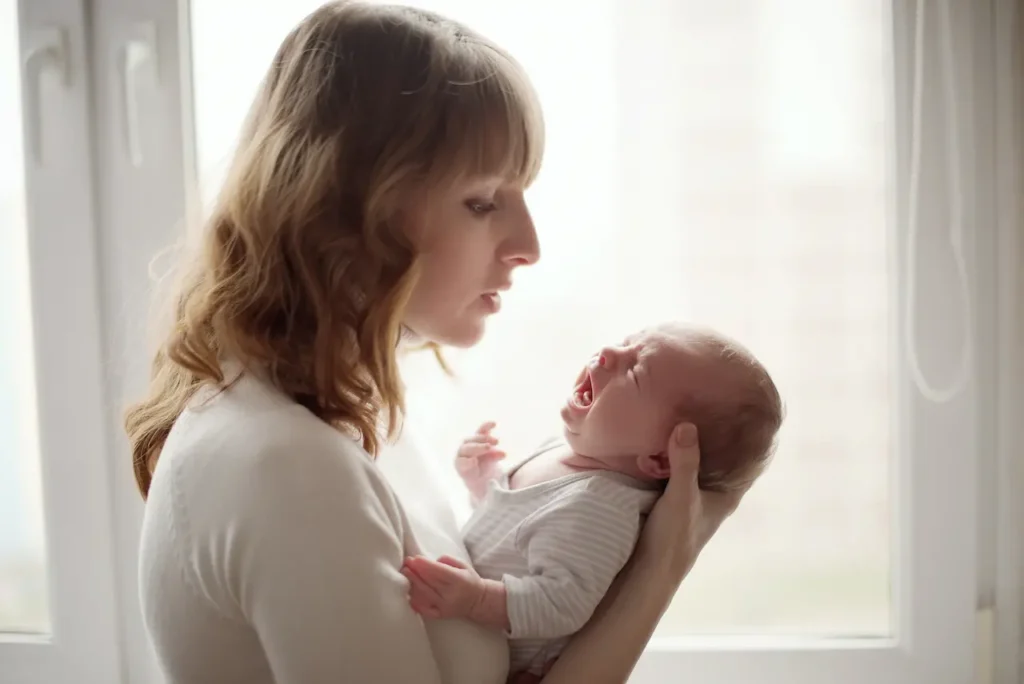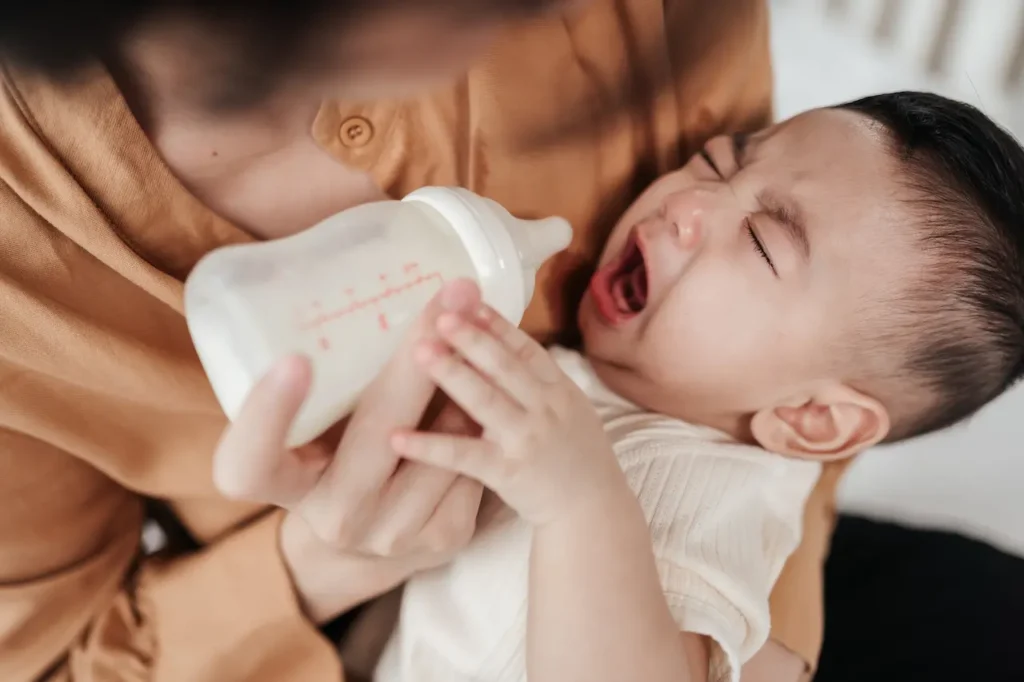Babyology is dedicated to the health of children. Starting off, we’ve got a lot of articles on health for children and their development. We hope you’ll find them useful as you take care of your family.
1. Tiredness
Fatigue is without a doubt the leading cause of baby crying – including the extreme crying that we find so difficult to understand. It may seem easy to tell when your baby is exhausted and to deal with the situation before it escalates, but sometimes it’s important to pay attention. In the time that it takes to prepare a cup tea, babies can go from being quite content to becoming inconsolable. Good luck. Keep cuddling.

2. Colic
If you have a baby that cries on average, increase the crying by 50%, and you may have a colicky child. Colitis doesn’t usually cause serious problems, but it can be a real problem for your family if you have a baby who is affected. It’s not called the witching hour without reason.
3. Reflux
If your baby is crying a lot during or after feedings, it could be due to reflux. This can be easy to diagnose because your baby is in obvious pain and will vomit all over you. Silent reflux can also cause your baby to be in pain, even if there are no obvious symptoms. See your doctor as soon as you suspect reflux. There are many effective treatments to make life easier.
4. Fever
Is your baby suffering from a fever? This one’s easier to diagnose! Even a mild temperature can make you feel ill. Babies and children are more likely to experience a fever than adults.
5. Earaches, Ear Infections, and Other Ear Problems
Earaches and ear infections can make adults cry. It’s not surprising that babies also feel this way. Children’s physiology makes them more susceptible to ear infections. Ear infections and earache are often associated with colds or sniffles.
You might also like: Marsupi Baby Carrier
6. Skin Irritation
If you’re worried about your baby feeling sore and itching, talk to your doctor. He or she may have some tricks to help.
7. Headaches
Headaches! Children can get headaches too. They’re more likely to be caused by stress than a headache in the afternoon. A headache can be a sign that your child is suffering from a mild cold or sniffles.
8. Teething
Could your baby have teething? Sore gums can cause grizzliness, tears, and grizzliness in babies as early as four months. Some babies even sprout their teeth as young as three months! Once your baby’s teeth are on the way, you’ll be able to feel them just beneath the surface of their gums. You can check this by using a clean finger.
Children’s Panadol has teamed up to bring you easy-to-read information on many aspects of a child’s health and development. This includes ways to deal with some of the main reasons why babies cry. Children’s Panadol Bub Tracker is a free app for Android or iOS that allows you to keep track of your baby’s health, feeding, and sleeping habits. The Children’s Panadol Dosage Calculator is also included to help you when your baby may need pain relief. Download First Five Years, Children’s Panadol’s book with information on children from birth to age five.
Six Reasons Babies Crying–And How to Soothe Their Tears
There are very few absolutes when it comes to infants. There are no two identical babies, so what works for one baby may not work well for another. But all babies share one thing in common: a tendency for crying. Of course, the extent of these little wails will vary from baby to baby.
But most parents should expect to hear their babies cry for one to three hours a day. Why? It’s the baby’s only way to communicate their needs and wants. It may not be possible to translate a baby’s cry using Google Translate, but there are a few common reasons for babies to cry. Learn how to interpret your baby’s cry and get some tips on soothing the tears.
Why Do Babies Cry?
When a baby is crying, they are probably trying to communicate that they need something. Darcia Navaraez is a professor of Psychology at the University of Notre Dame. She says that offspring of mammal species cry to signal to their parents they need immediate attention. We’ve listed 11 reasons babies cry and some ways to calm them down.
1. Hunger
It’s called “hangry” with good reason. Baby’s can become irritable if they don’t eat for a few hours. The “feed me” cries are rhythmic, repetitive, and (usually), short and low-pitched. Experts say that a baby’s hunger cry may include a “neh”, which is caused by the tongue hitting the roof in the search for milk.
It’s not important to keep an eye on the time when feeding your baby. Instead, you should pay attention to their cues. Paul Horowitz, MD, a pediatrician at Discovery Pediatrics, Valencia, California, says that crying is a sign of late hunger. Look for signs that your baby is hungry before they start crying: lip-smacking or sucking their hands.

2. Sleepiness
As a tired parent, it may be possible to fall asleep as soon as you hit the bed, but this is not always true for your baby. Just like everything else, sleep is a skill that can be learned. The Sleep Lady, a baby consultant known as Kim West LCSW-C, says that newborns do not have a circadian rhythm established until 4 months.
A crying baby cannot soothe itself, so parents must help it establish this. Swaddling may help your baby feel comfortable and cozy. Some babies respond to a rocking motion or the sound of lullabies, as well as the hum of the vacuum.
It can be tempting to reduce the amount of sleep your baby gets during the day, believing that fewer afternoon naps would help them sleep better at bedtime. But this will not work. Overtired babies will have hormones released that make it difficult to sleep. If the baby seems tired, even if it is not their usual naptime, you should put them down. Horowitz believes that sleepy babies should get to sleep.
You might also like: Care For Your Baby’s Teeth and Gums
3. Dirty Diaper
Some babies will sit in a dirty or wet diaper for many hours with no problem. Some babies will go crazy if they are uncomfortable for longer than a few seconds. Can you blame them? If you want to be sure that the diaper is still wet, open it up and perform a sniff test. You can also choose a brand of diapers with a color indicator. Pampers Swaddlers are one such example. You don’t need to take your baby out of his or her diaper every time you want to check if the crying is caused by diaper discomfort.
4. Need to Burp
When you see your baby crying after feedings, it’s an indication that they need to burp. There are times when a good burp is in order. Horowitz explains that while everyone remembers to burp their baby after feedings, many babies need to be burped if they have hiccups, are sucked on a pacifier, or cried.
When you see a baby crying, give them a gentle pat on the back. Find the technique that suits you best. Bumpie Katie Dahlia explains: “I hold my child over my left shoulder and make sure that his left arm hangs over my shoulder.” “I then rub circles on his back and left side, starting at his hip and moving up. We usually get a big burp after two or three attempts.
5. Tummy Trouble
Does your crying child also wiggle, arch their back or pump their legs? Preeti parikh is a pediatrician in New York City and says that these are signs of Baby Gas. There’s a simple way to help them get rid of it. Parikh suggests that you hold your baby on its left side. This will help digestion. Parikh says, “If your baby is gassy you can push their legs up and bicycle them to the chest in order to relieve gas.
6. Teething
As early as four months, a baby can begin teething. When the pain begins, a spike in crying is almost guaranteed. Teething can also be indicated by excessive drooling or gnawing at anything in reach. Parikh suggests sucking on a finger or thumb, or a pacifier. Horowitz says you can even give a gum massage to your baby. Just rub the gums with your finger until it make a squeaky noise. You can also provide relief to your baby by giving him or her a teether or a washcloth.
Avoid over-the-counter teething aids such as Anbesol and Orajel, even though they may be tempting. The American Academy of Pediatrics has banned the use of these benzocaine products, as they can numb the back of the throat and interfere baby’s ability to swallow. The US Food and Drug Administration also warns parents against homeopathic remedies such as tablets.
Avoid amber teething jewelry as they have been shown to be dangerous to babies. Natural relief works best to soothe a baby who is crying from teething pains unless the baby is in a real state of distress. Tylenol or Motrin, in doses appropriate to the baby’s weight, are the only medications recommended for teething.

What Should I Do When My Baby is Crying at Night?
You should take care of your newborn if you hear it crying in the night. Ignoring your baby’s crying and letting them cry at this age makes them believe that they are not important and that nothing they do matters. Babies need to feel loved and cared for at this stage.
At this age, babies are not able to learn a routine. By responding to their signals for comfort and feeding, you can help your baby feel more secure.
What Can I Do to Calm My Baby Down?
Try these approaches to soothe a baby who is crying:
- Feeding
- Checking and changing their diapers/nappies if necessary
- Play some music or gentle sounds or sing to your baby while you are quiet.
- Going for a stroll or rocking your baby gently
- Holding your baby to your chest or shoulder
- Holding your baby against your chest while bare-chested is a good way to engage in skin-to-skin contact.
- While holding your baby against you, or while they are lying on your lap, firmly and rhythmically stroke their back.
Even if your baby doesn’t stop screaming immediately, holding them when they cry will make them feel secure and loved.



